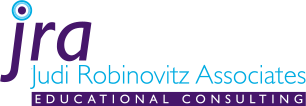The Economic Value of Test Prep
As families face tough economic decisions, they sacrifice their children’s exta-curricular and enrichment programs. Elite athletic travel teams are forced to fold as once-popular tournaments shrink in number or disappear. That trend is mirrored in academic areas. Test preparation for college entrance (SAT/ACT) and AP exams falls to the wayside, too. Yet few families realize the long-term financial repercussions that such decisions about exams can have.
The rising costs of attending a private university, combined with the economic downturn, force families into choosing the low-cost State University System. Ironically, as the applicant pool increases, so do admission standards. The current cut-off for the Bright Futures Merit Award for SATs (970) falls below the average SAT scores of every SUS school’s freshman class. Calls to raise the standards will once again be scrutinized on February 21, 2009, when the SUS’s Board of Governors presents recommendations that could change Bright Futures.
Currently, Bright Futures awards 100% of a student’s tuition to those who earn a 3.5 weighted GPA and a 1270 SAT or 28 ACT — and 75% to those with a 3.0 GPA and 970 SAT or 20 ACT (Full descriptions of qualifications for Bright Futures are available from your guidance counselor). The 25% difference in cost over the course of 4 years can mean substantial family savings. Students who meet the grade criterion would be wise to invest in test preparation.
There are also fiduciary benefits to scoring well on AP exams that may not be as obvious. Because most colleges and universities award academic credit for high AP exam scores, AP credits can translate into a lighter course load or early graduation. Either option equates to significant savings.
Families who choose the community college option sometimes neglect the SAT/ACT. However community colleges also rely on standardized test scores for placement in college courses. Lower scoring students must enroll in remedial classes which do not fulfill graduation requirements, and so increase the cost of college education. For a student excited about finally having a say in course selection, this can be a frustrating and demeaning realization. Furthermore, successful completion of a remedial series does not guarantee progression to college-level courses; once again the student faces a standardized exam. To avoid such remedial courses in community college, scores of 440 on the SAT Reading and Math (or 18 on the ACT English and Math) are required. Reaching an SAT Reading score of 500 (or ACT scores of 21 in English and 22 in Reading) and an SAT Math score of 500 (or an ACT score of 21 in Math) not only allows full course selection, but also exempts the student from taking the CLAST, another standardized test required for both graduation from community college and for admission into a 4-year SUS school.
So, yes, when taking standardized tests there is more at stake than admission into your dream school. Time and money spent at the “front end” to effectively prepare for the SAT and/or ACT can reap benefits well into the future. So spend you money wisely in such efforts. Seek assistance from an organization that has a proven track record of score improvement based upon years of focused experience. Score At The Top, through its four learning centers in Palm Beach and Broward counties, has over twenty-five years of successful test preparation and academic tutoring experience. We know that our approach works, turning best intentions into best scores. Contact us for the best guidance and tools to build your collegiate future!
AJ
